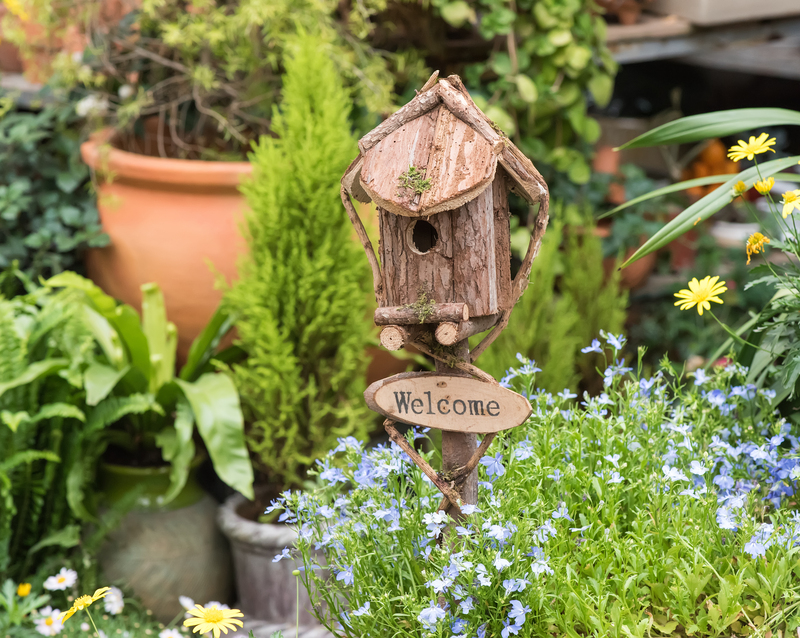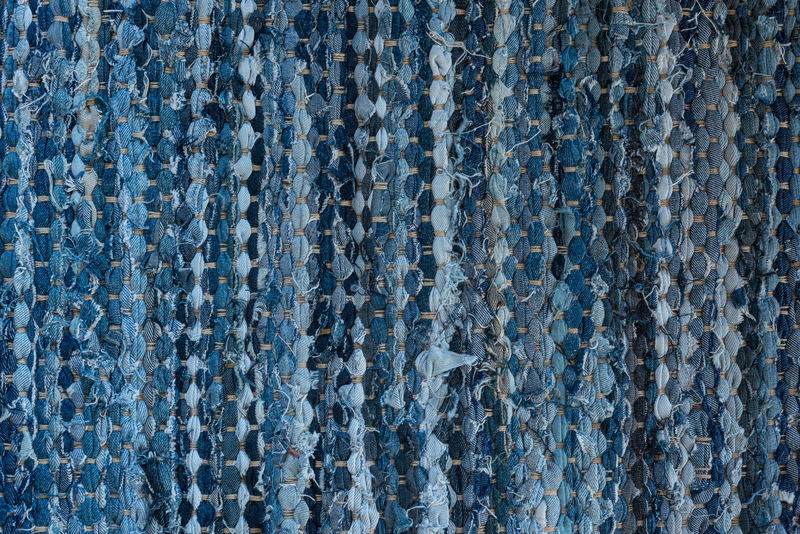Upcycling Your Way to a More Sustainable and Stunning Home
Upcycling is more than just a trendy buzzword--it's a conscious lifestyle choice that promises both an eco-friendly and aesthetically pleasing home. In a world where sustainable living is no longer optional, learning how to creatively upcycle household items is both rewarding and impactful. In this article, we'll dive into everything you need to know to transform your living space and the planet. Whether you're new to the concept or a veteran DIYer, discover inspiring upcycling projects, practical tips, and the substantial benefits of turning the old into the extraordinary.
What is Upcycling, and Why Does it Matter?
Upcycling is the process of transforming unwanted or discarded items into something valuable, functional, or beautiful. Unlike recycling, which breaks items down to raw materials, upcycling gives objects a second life--often of higher quality than the original product.
- Waste Reduction: Reusing materials keeps items out of landfills.
- Environmental Conservation: Upcycling saves energy that would be spent on producing new goods.
- Unique Home Decor: No two upcycled pieces are ever the same, ensuring your home reflects your individual taste.
- Cost Efficiency: Creating home decor from old items can save you money.
The upcycling movement furthers a sustainable home lifestyle while letting your creativity shine.

The Environmental and Aesthetic Benefits of Upcycling at Home
Environmental Sustainability
Every product has an environmental footprint, from manufacturing to disposal. Upcycling furniture or decor avoids the pollution and resource consumption linked to new production. By extending the life of materials, you directly reduce your home's environmental impact.
A Stunning, Personalized Home
No store-bought item rivals the charm and character of a thoughtfully upcycled creation. Incorporating upcycled home decor ensures your space tells a unique story. These reclaimed treasures often spark conversations and reflect your innovative spirit.
Getting Started: Upcycling Ideas for Every Room
From kitchens to gardens, every corner of your dwelling holds potential for creative renewal. If you're ready to embark on your upcycling journey, start with these room-by-room project ideas:
Kitchen Upcycling Inspiration
- Glass Jars to Food Storage: Clean out old jars and use them for pantry staples or as spice holders. Labeling them adds an organized, rustic vibe.
- Wooden Pallet Shelves: Upcycle wooden pallets into wall-mounted open shelving for dishes or plants.
- Cutlery Hooks: Bend old forks and spoons to create unique hooks for towels, mugs, or keys.
Living Room Upcycling Projects
- Wine Crate Coffee Tables: Stack and fasten vintage wine crates for a customizable coffee table or storage unit.
- Old Ladder Bookcase: Repurpose a paint-splattered ladder into a chic bookshelf or plant stand by stabilizing and painting it.
- Tire Ottomans: Cover a cleaned and padded tire with fabric or rope to craft a statement ottoman.
Bedroom Transformation Ideas
- Drawer to Under-Bed Storage: Salvage dresser drawers and add wheels for easy under-bed storage.
- Headboard from Doors: An old wooden door, sanded and painted, makes a stunning vintage headboard.
- Frame Collage Wall: Group mismatched frames for an artistic gallery wall.
Bathroom Upcycling Tips
- Mason Jar Organizers: Attach mason jars to a wooden plank to organize toothbrushes, makeup tools, and cotton balls.
- Teacup Holders: Mount vintage teacups for storing jewelry or small essentials.
- Upcycled Mirror Frames: Decorate basic mirrors with driftwood, shells, or tiles for a bespoke touch.
Garden and Outdoor Innovations
- Tin Can Lanterns: Punch holes in tin cans, paint, and add candles for enchanting outdoor lighting.
- Pallet Planters: Fix pallets upright, fill the slats with soil and plants for vertical gardens.
- Old Boots as Planters: Weather-resistant, quirky, and fun--boot planters personalize patios creatively.
The DIY Upcycling Process: Step-by-Step Guide
Thinking about upcycling household items seems daunting? It's actually quite simple with the right approach. Here's a beginner-friendly guide to upcycle almost anything:
- Assess Possibilities: Take stock of what you already have--furniture, kitchenware, textiles, etc. Use your imagination; an old ladder or suitcase could become something amazing!
- Research Ideas: Look up project inspirations and tutorials. Pinterest and Instagram are treasure troves for upcycling ideas.
- Prepare Materials: Clean and, if necessary, sand or scrub the item. Remove old paint or finishes for a fresh start.
- Choose Your Tools: Common tools include paint, glue, fabric, nails, sandpaper, and sewing kits. Safety goggles and gloves are recommended.
- Plan the Project: Measure, sketch, and gather supplies. Sometimes a quick drawing clarifies the design process.
- Get Creative: Paint, stain, cover, or embellish the item for its new purpose.
- Finish and Protect: Add protective coatings, varnish, or sealant if needed to increase longevity.
- Display with Pride: Place your upcycled decor where it enhances your living space and enjoy the satisfaction of a greener home.
Top Tips for Successful and Safe Upcycling
- Choose Quality Materials: Aim for sturdy objects. Avoid items with mold, significant damage, or those previously exposed to toxic substances.
- Emphasize Safety: Use eco-friendly chemicals, proper ventilation, and personal safety equipment.
- Start Small: Begin with manageable projects before tackling furniture or complex builds.
- Mix Styles: Combine modern and vintage elements for a truly one-of-a-kind look.
- Document the Process: Photograph your progress. It's motivating and lets you share inspiration with others interested in sustainable home upcycling ideas.
Common Mistakes to Avoid When Upcycling at Home
Even seasoned DIYers make mistakes. Keep these pitfalls in mind:
- Skipping Prep Work: Not cleaning, sanding, or treating items can lead to disappointing results.
- Using the Wrong Adhesives: Choose glue or fasteners compatible with your material--fabric glue for textiles, wood glue for timber, etc.
- Overdoing It: Sometimes less is more. Respect the lines and history of the original item.
- Neglecting Functionality: Beauty is important, but make sure your upcycled household items remain practical and safe to use.
Where to Source Upcycling Materials
You don't have to wait for your trash bin to fill up before starting your project. Some of the best upcycling materials come from outside your home:
- Thrift Stores and Flea Markets: Great for finding inexpensive, unique pieces brimming with potential.
- Online Marketplaces: Apps like Facebook Marketplace, Freecycle, or Craigslist often have free furniture.
- Curbside Finds: Neighborhood giveaways can uncover treasures that are destined for the landfill.
- Friends and Family: Let people know you're looking for items to upcycle for home decor.
Bonus Tip:
Visit construction sites--with permission--or ask local businesses about discards. Old pallets, windows, or hardware are often given away for free.
Making Upcycling a Sustainable Habit
A sustainable home is not made overnight. To fully embrace upcycling for home transformation:
- Prioritize Quality Claims: Buy fewer, better pieces and revamp them as trends or needs shift.
- Maintain What You Create: Durable, well-maintained upcycled items will last for years.
- Inspire Others: Share your wins (and lessons learned) on social media. Every post has the power to encourage another household to reconsider their consumption habits.
Frequently Asked Questions about Upcycling at Home
-
What's the difference between upcycling and recycling?
Recycling breaks items down and reprocesses them into new materials, sometimes resulting in lower quality ("downcycling"). Upcycling transforms items into a new and often better form, without unnecessary processing. -
Is upcycling suitable for small homes?
Absolutely! Many upcycled items, like vertical gardens and under-bed storage, are designed to maximize small spaces. -
Do I need special skills?
Not at all. Many projects require only basic skills and common household tools. With practice, you can tackle more advanced ideas. -
Does upcycling really help the environment?
Yes, by preventing waste, saving energy, and reducing production demands, upcycling gives old items a guilt-free second chance.

Real-Life Inspiration: Upcycling Success Stories
Across the world, individuals have transformed their living spaces through creative upcycling. Here are just a few compelling examples:
- From Doors to Dining Table: An architect in London refurbished large, discarded doors into a stunning dining table, preserving the original hinges for character.
- Pallet to Patio Sofa: A family in Seattle turned free construction pallets into a luxurious outdoor sofa, cushioned with upcycled textiles.
- Vintage Suitcase Shelves: An artist in Melbourne cut old suitcases into quirky, lightweight wall shelves.
Let these stories inspire your own journey toward a more sustainable, stunning home through upcycling!
Conclusion: The Reward of Upcycling Your Home
Upcycling for home improvement is the ultimate intersection of sustainability, frugality, and personalized style. By breathing new life into neglected items, you support a more balanced planet while enjoying decor that's truly unique to you. Start simple, stay consistent, and remember: every upcycled item makes a difference. Transform your house into a sustainable, beautiful haven--one creative project at a time!
Ready to Upcycle?
Are you inspired to begin your own upcycling home adventure? Share your projects online, and join the growing community of eco-conscious creatives. The only limitation is your imagination!
